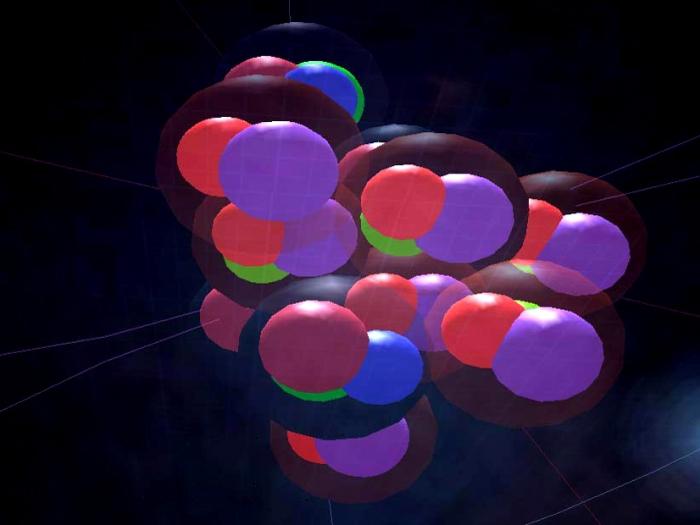The concept of "chemical element" has long been included in the everyday life of scientists. So, in 1661, R. Boyle uses this definition with respect to substances, which, in his opinion, can no longer be decomposed into simpler components - corpuscles. These particles do not change during chemical reactions and can have different sizes and weights.
Later, in 1789, Lavoisier proposed the first table, which includes 33 simple bodies. At the beginning of the nineteenth century. J. Dalton introduces the atomic-molecular hypothesis, on the basis of which J. Berzelius subsequently determines the atomic masses of the elements known then. In 1869, D.I. Mendeleev opens the
periodic system (PS) and the periodic law. However, the modern interpretation of this concept was formed later (after the discoveries of G. Mosley and J. Chadwick). In their work, scientists proved that the charge of
the atomic nucleus is equal to the corresponding (ordinal) number of the element in the PS D.I. Mendeleev. For example: Be (beryllium), serial number - 4, core charge - +4.
These discoveries and scientific works have helped to conclude that a chemical element is a type of atom with the same nuclear charge. Consequently, the number of protons in them is the same. Now 118 elements are known. Of these, 89 are found in nature, and the rest are obtained (synthesized) by scientists. It is worth noting that the International Chemical Union (IUPAC) officially recognized only 112 elements.

Every chemical element has a name and a symbol, which (together with the serial number and relative atomic mass) are recorded in PS D.I. Mendeleev. The symbols with which types of atoms with an equal nuclear charge are recorded are the first letters of their Latin names, for example: oxygen (lat. Oxygen) - O, carbon (lat. Carbon) - C, etc. If the name of several elements begins with the same letter, then another letter is added to its abbreviated record, for example: lead (lat. Plumbum) - Pb. These designations are international. New superheavy types of atoms with the same nuclear charge, which were discovered in recent years and are not officially recognized by IUPAC (numbers 113, 115-118) have temporary names.
A chemical element may also be in the form of a simple substance. Note that the names of simple substances may not coincide with the names of the type of atoms with the same nuclear charge. So, for example, He (helium) in nature exists in the form of a gas, the molecule of which consists of one atom. The phenomenon of allotropy can also occur when one element can exist in the form of several simple substances (oxygen O 2 and ozone O 3). There is also the phenomenon of polymorphism, i.e. the existence of several structural varieties (modifications). An example of this is diamond, graphite.
Also, according to their properties, types of atoms with an equal nuclear charge are divided into metals and non-metals. So, the chemical element metal has a special crystal lattice and most often in external chemical reactions gives off electrons, forming cations, and non-metal - attaches particles, forming anions.
During the course of chemical reactions, the element is preserved, because only the redistribution of elementary particles on the outer shells occurs, and the nuclei of atoms themselves remain unchanged.
It turns out that a chemical element is an aggregate of a certain type of atom with the same nuclear charge and the number of protons that exhibit characteristic properties.